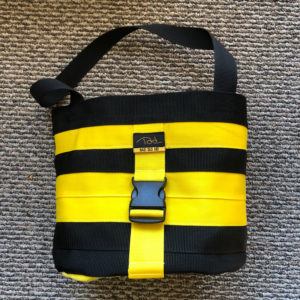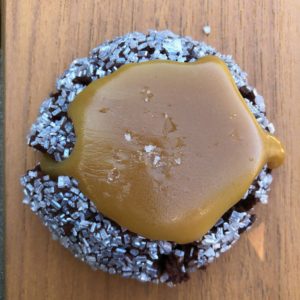Yellow and Black
As I have said, I have been going through scraps and making bags out of them. Here, I have bags made of three different kinds of yellow straps. It is a fun challenge to plan the bag so I have enough of one kind of yellow strap to finish the whole bag.












